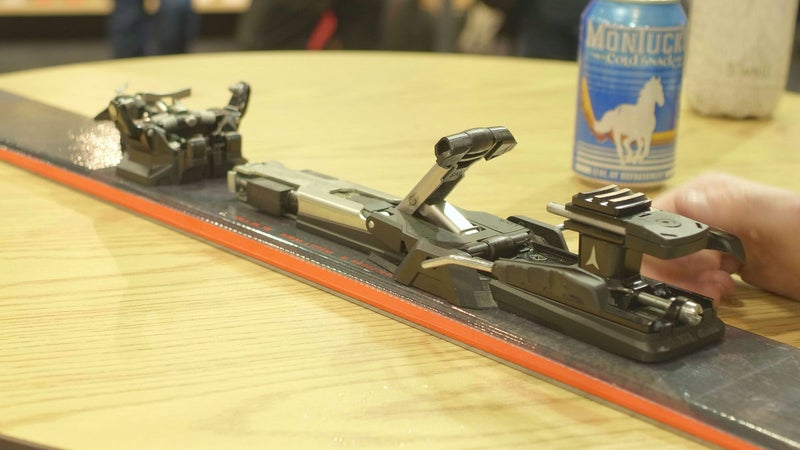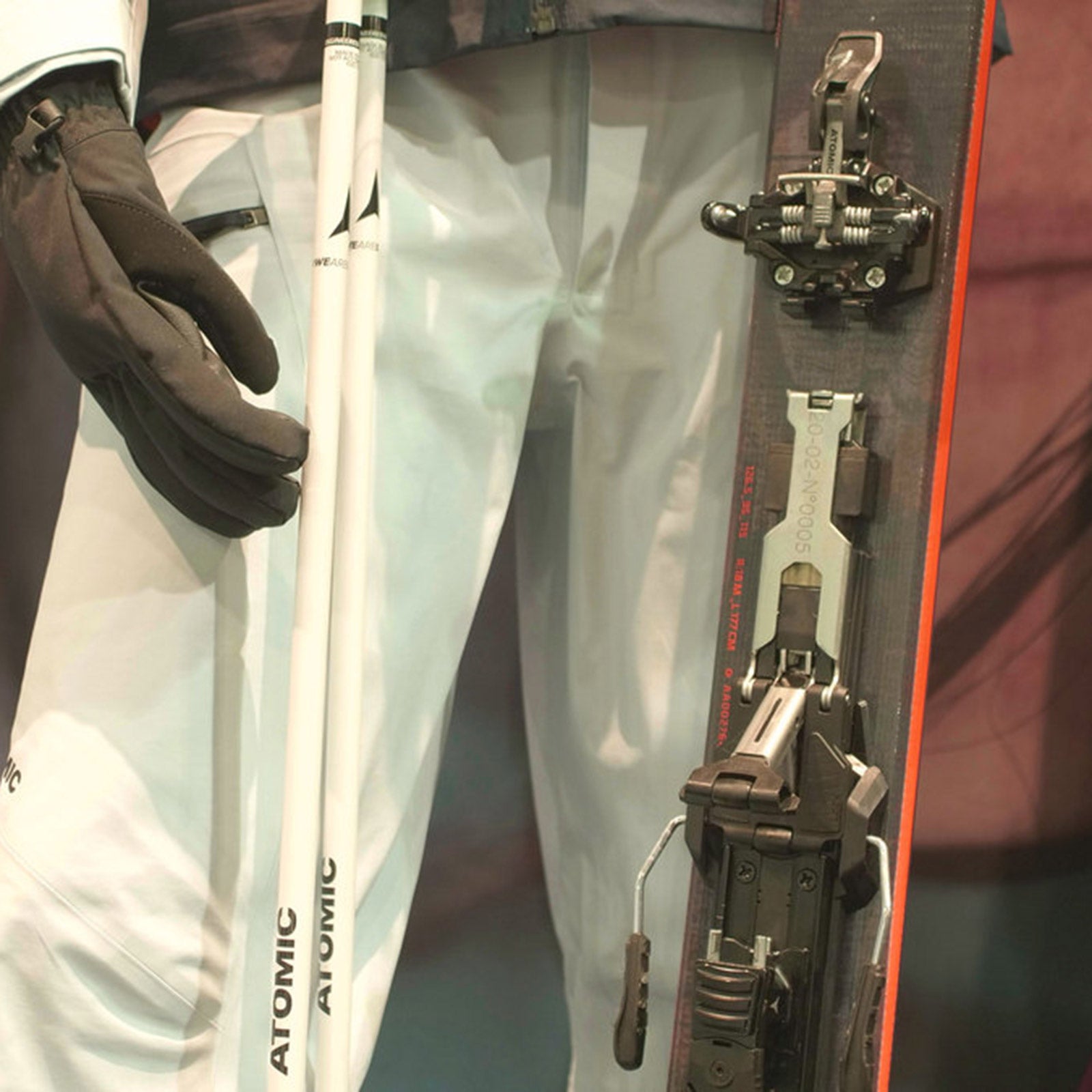Alpine touring bindings have evolved tremendously since the days when the only way to earn turns was tele skiing. From kingpins to the groundbreaking Shift, there are more options than ever, whether your priority is shedding weight or shredding hard. But none of them are particularly beginner-friendly. One thing that’s particularly tricky for first-time ski tourers to figure out: using heel risers.
These small pieces of metal at the back of any touring binding keep your foot more level on uphill inclines, to make each step forward more efficient and comfortable, much like walking up stairs. Most bindings offer two settings—low and high—which the skier manually flips between as the skin track grows steeper or eases back. The mechanisms are effective, but they do take a few seconds to adjust—on most models, you have to stop skinning, lift your heel, and flick the risers with your pole or adjust by hand in order to get them to move up or down.
Atomic may be the first company to offer a real fix to that nuisance with the all-new Backland AutoClimb, a beginner-oriented model that uses hydraulics to automatically adjust the heel riser to match the slope under your feet, from two to 13 degrees. How? A tube inside the heel is filled with antifreeze fluid, which shifts back and forth between two chambers. As the fluid shifts, it triggers a piston, which props up (or lowers) the heel riser. Atomic says it takes three to five steps for the riser to adjust after a change in slope angle.

Of course, this complex system comes with increased potential for failure—failure that the average skier likely won’t be able to fix on his or her own in the backcountry. The good thing is that issues with the hydraulic mechanism won’t affect your ability to lock down the binding into ski mode to get out of the mountains safely.
For those obsessed with efficiency or those who spend most of their time skinning on resort, the binding could be a game changer. And for those venturing onto backcountry skis for the first time, the automation could make for an easier learning curve. Aside from the automatic heel riser, the Backland AutoClimb is a regular pin tech model of the sort that skiers have been using for decades, making it an ideal middle-ground for those accustomed to alpine bindings.
Besides, who wouldn’t want to escape the paradox of choosing between two riser settings, inevitably winding up with your heel elevated slightly too much or not enough?


